Target Species: Smooth Jewelflower (Streptanthus hyacinthoides)
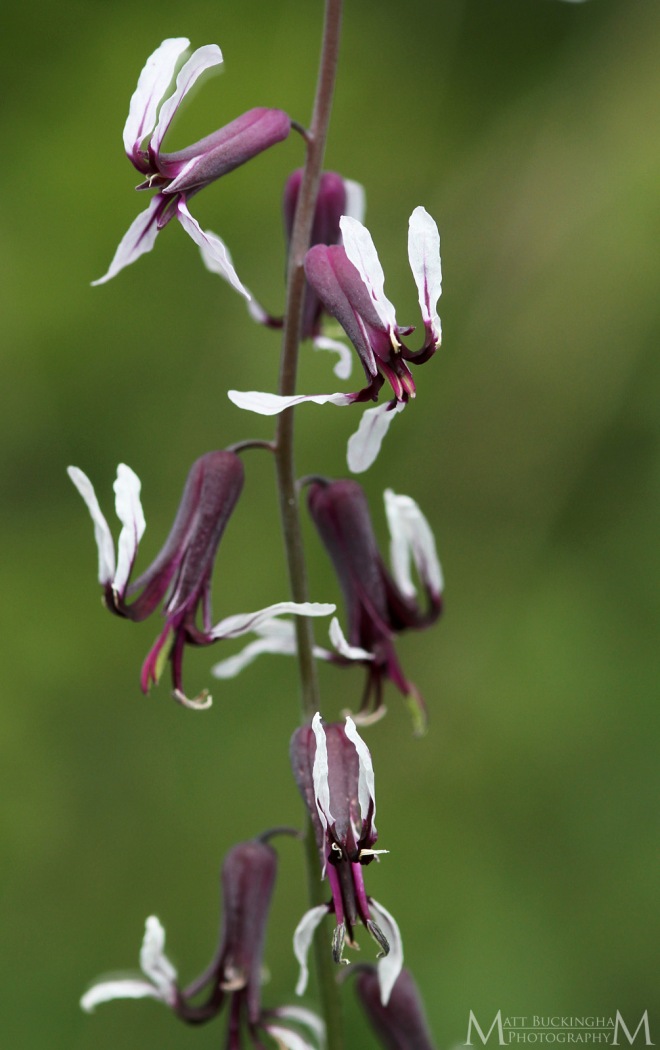
Smooth Jewelflower
I have long admired the bizarre blooms of the Smooth Jewelflower, but had not previously sought it out. Though it may be locally abundant, Streptanthus hyacinthoides is uncommon to rare in Texas. A species of deep sands, it is most frequently encountered in the northern reaches of the Post Oak Savannah. Globally it occurs from extreme southern Kansas and central Oklahoma through northeast Texas into northwestern Louisiana. There are also a couple of disjunct populations in the Pineywoods: in the Big Thicket in Hardin and Newton Counties.

Smooth Jewelflower
It was here that I sought them out. In the Pineywoods they occur in xeric sandhills. In the literature, these unique communities are variably referred to as xeric sandhills, oak-farkleberry sandylands, xeric sandylands, sandhill pine forests, etc. Here soil conditions inhibit the growth of many species. The deep, coarse sands here ensure that even in times of high rainfall, the water percolates down through the soil very rapidly. As a result, xeric sandhills exist with perpetual drought-like conditions, and only drought-adapted species persist.

Smooth Jewelflower
I was able to locate this population thanks to the help of my botanist friend Eric Keith, and Wendy Ledbetter, the Forest Program Manager of the Nature Conservancy in Texas. Like so many more of our imperiled species, these rare jewels are protected by the Nature Conservancy. I found them growing in a series of sandy clearings in a xeric sandhill dominated by Longleaf Pine (Pinus palustris) and Bluejack Oak (Quercus incana).

Smooth Jewelflower
I found the strange flowers somewhat difficult to capture. I found them strikingly beautiful in their uniqueness. Beyond habitat preference, I could find little on the life history of this species while researching my 2017 list. It seems that there is still much to learn about this peculiar jewel of the sandhills.

Smooth Jewelflower
Xeric sandhills are also home to a variety of other unique and beautiful flowering plants. Cacti and yucca, typically considered genera of the southwestern states, thrive here. Traditionally the cactus species of this region was considered to be Opuntia humifusa, however recent work by Majure, et. al. is challenging that (More on that in a later blog post). Using their new dichotomous key I keyed this species to Opuntia mesacantha.

Opuntia cf. humifusa
The beautiful Carolina Larkspur (Delphinium carolinianum) was also blooming in profusion. I photographed the individual below from different angles, to see how the angle of light changed affected their color.

Carolina Larkspur

Carolina Larkspur
We also found the bizarre Large Clammyweed (Polanisia erosa) nearby. I have heard the blooms described as miniature moose heads. Large Clammyweed, like many species of xeric sandhills, is endemic to the West Gulf Coastal Plain.
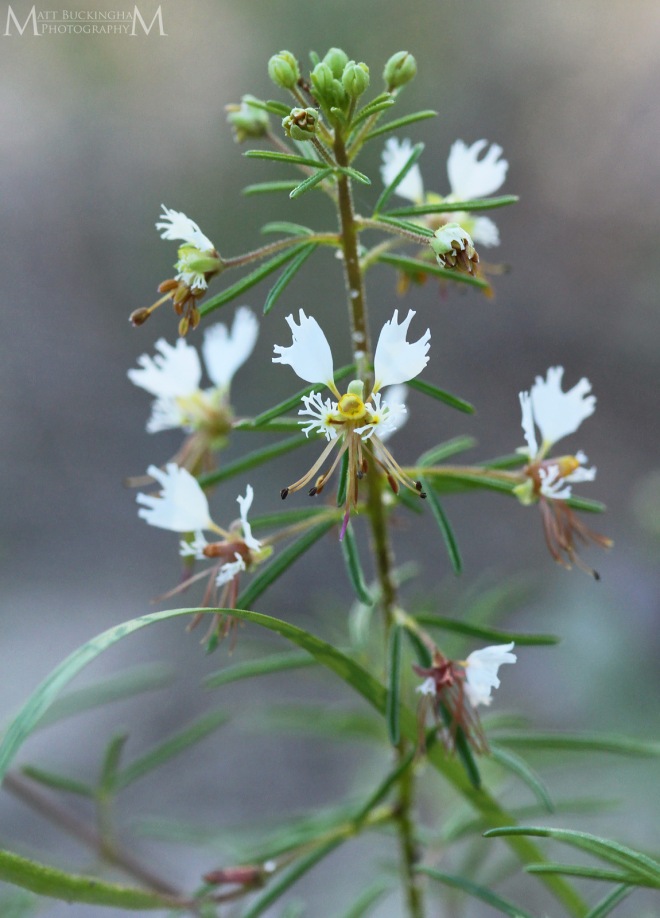
Large Clammyweed
Butterfly Weed (Asclepias tuberosa) was also blooming in profusion. This striking milkweed is common in sandy habitats throughout much of the United States.
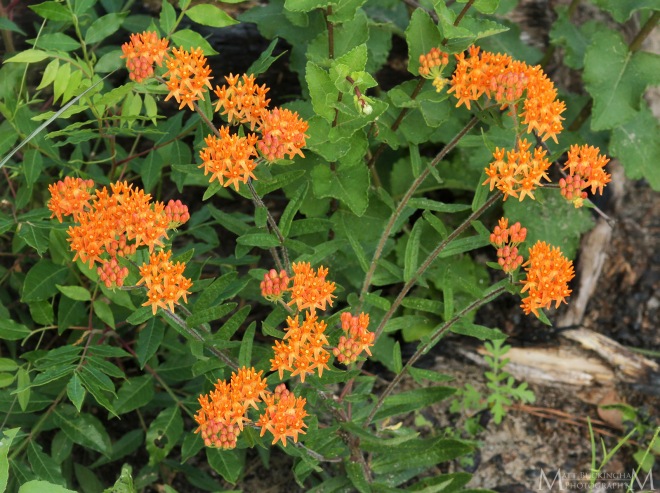
Butterfly Weed
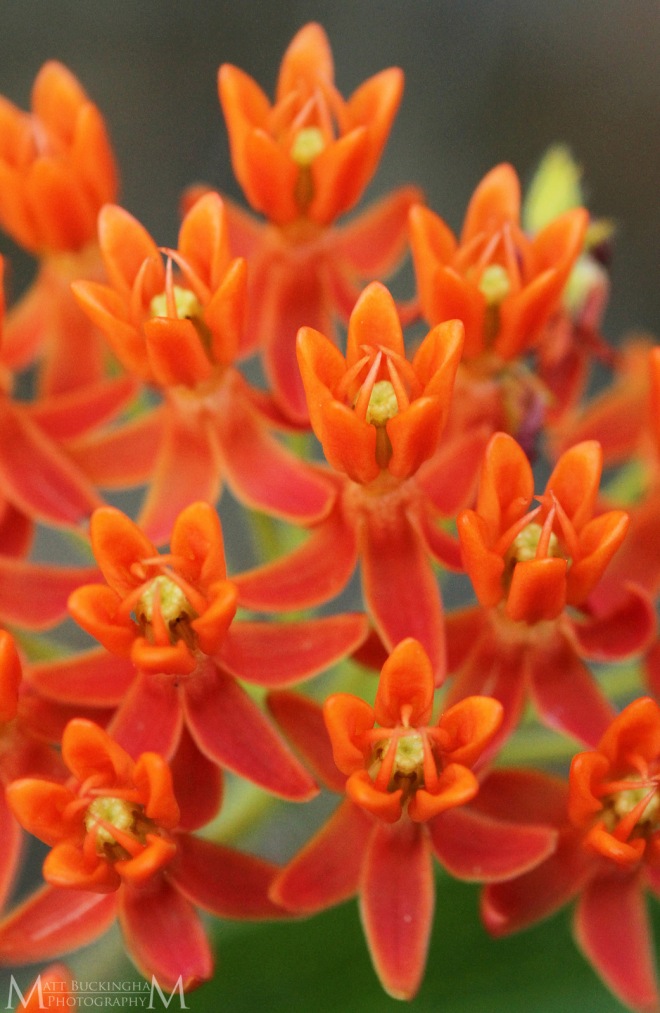
Butterfly Weed
Farkleberry (Vaccinium arboreum) is a conspicuous mid and understory component in xeric sandhills. This blueberries produce edible fruits. Though they are much smaller and less flavorful than what you might find in your grocery store, they still make for a refreshing treat while wandering across the parched sand.

Farkleberry
Growing tangled among some of the numerous Farkleberries we found the twining stems of the Netleaf Leather Flower (Clematis reticulatus).

Netleaf Leather Flower
Xeric sandhills are certainly one of my favorite places to explore. This post barely scratched the surface of the diverse flora that occurs here, and I didn’t even mention the many rare and interesting animal species that can be found in these deep sands, and I hope to revisit these special places in future blog posts.
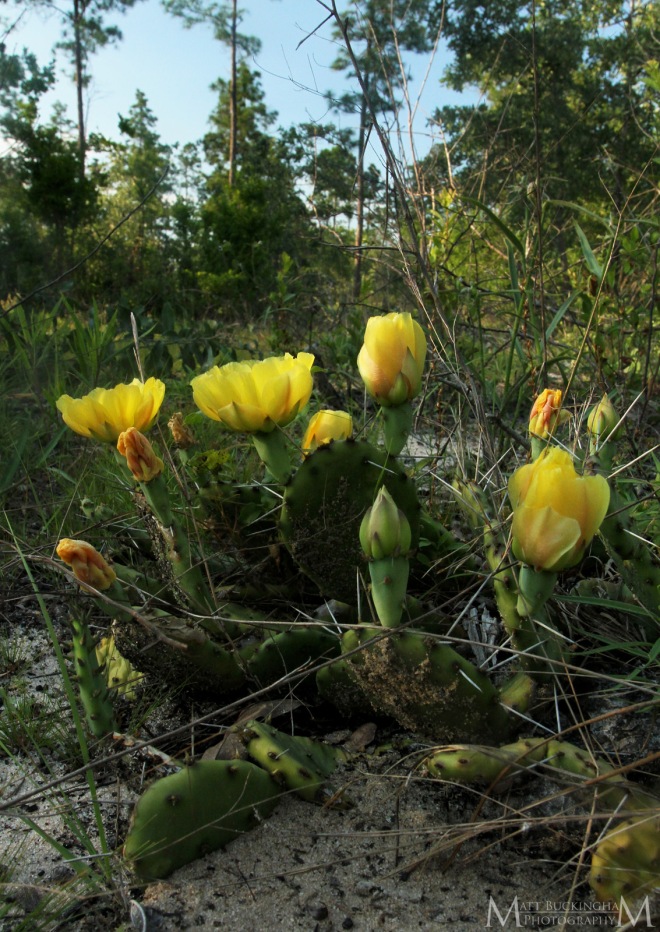
Cacti bloom in a xeric sandhill
